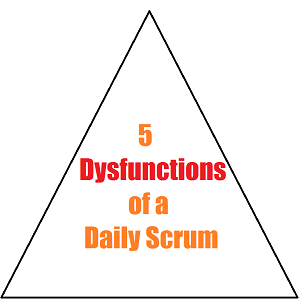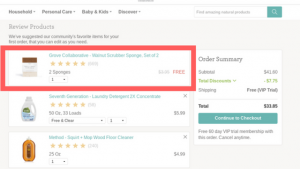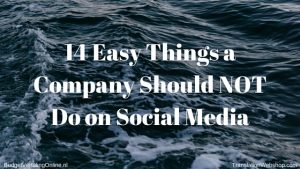Learn how conversational marketing improves customer engagement, accelerates sales cycles and builds relationships with B2B buyers.
Did you know that 91% of business buyers and 86% of consumers consider the company’s experience as important as its products and services?
If your B2B go-to-market strategy doesn’t prioritize delivering a personalized and engaging experience for your audience, you could be missing out on potential customers and growth opportunities. Fortunately, conversational marketing can help you create the kind of experience that modern buyers expect.
This article is a guide to conversational marketing and why it should be a key component of your B2B go-to-market strategy.
Table of contents
- Defining conversational marketing
- Who is conversational marketing for?
- Benefits of conversational marketing in your B2B sales efforts
- Personalization’s role in conversational marketing
- Creating a conversational marketing GTM strategy
- Step 1: Identify your audience
- Step 2: Select the right tools
- Step 3: Create a messaging framework
- Step 4: Train your team
- Step 5: Measure results
- Step 1: Identify your audience
- Boost B2B sales and customer satisfaction with conversational marketing
Key takeaways:
- Conversational marketing improves engagement and conversion rates in B2B.
- A conversational marketing growth strategy creates a more personalized and engaging experience, improves conversion rates and builds stronger customer relationships.
- To build your strategy, identify your audience, select tools, create a messaging framework, train your team and measure results.
Defining conversational marketing
At its core, conversational marketing is a personalized and real-time approach to engaging with potential customers. It involves leveraging conversational tools like chatbots, messaging apps and live chat to interact with prospects and customers.
By using these channels, businesses can create a more natural, human-like experience that fosters engagement and builds relationships with their audience. Instead of one-way communication, conversational marketing creates an ongoing dialogue between the business and the customer.
Who is conversational marketing for?
Conversational marketing offers a more effective way for all types of businesses — ecommerce, real estate, online coaching, brick-and-mortar stores, restaurants and more — to build and manage relationships that drive success.
For B2B companies, conversational marketing provides a unique opportunity to engage with potential customers in a personalized and real-time manner, helping to establish a stronger connection and build trust.
More than half of demand and account-based marketers use conversation automation technologies, according to Forrester’s State of Demand and ABM Tactic Survey. And it’s not just a passing trend, as 43% of these marketers plan to increase their budget for an online chat as a conversational delivery channel.
By leveraging conversational tools like chatbots and messaging apps, B2B businesses can create a more natural and seamless experience for prospects, guiding them through the sales funnel and answering any objections or questions they may have. This ultimately leads to higher conversion rates and stronger customer relationships.
Here’s an example:
As a SaaS company selling project management tools to enterprise-level businesses, you implement a conversational marketing strategy to engage busy executives looking to streamline their team’s workflows and increase productivity.
You create a chatbot with a messaging framework that includes responses to common objections, personalized product recommendations and solutions to common pain points based on the user’s needs.
When a potential customer visits your website, the chatbot engages them in a conversation, asking questions about their business and providing real-time answers and solutions based on their responses.
The potential customer is connected to a live chat representative for more personalized assistance if the chatbot can’t answer a specific question. This approach makes customers feel heard, valued and supported, increasing the likelihood of conversion into paying customers.
Benefits of conversational marketing in your B2B sales efforts
When it comes to B2B sales, the journey from prospect to customer can be a bumpy ride. Traditional sales cycles can be long, complicated and full of obstacles that make it tough for buyers to get the information they need to decide. That’s where conversational marketing comes in to help smooth things out.
With conversational marketing, buyers can engage with your business more naturally and personally. They can ask questions and get answers in real time without having to wade through a maze of phone menus or fill out endless web forms.
Conversational marketing empowers buyers to take control of their own journey while still providing the guidance and support they need to make informed decisions.
Up to 80% of B2B sales interactions between buyers and sellers will be happening in digital channels by 2025, according to Gartner. This emphasizes incorporating digital strategies like conversational marketing into your overall B2B GTM strategy.
By meeting buyers where they are and providing personalized experiences, conversational marketing helps remove the roadblocks that can slow down the B2B sales cycle.
And the best part? You can measure the impact of your conversational marketing efforts with metrics like engagement rates, conversion rates and customer satisfaction scores. So you can continuously optimize your strategy and keep improving to deliver an even better experience for your customers.
Some other benefits include:
- Boost your website’s conversion rates.
- Create genuine connections with your buyers.
- Speed up your sales process.
- Save your sales team’s valuable time by handling repetitive inquiries.
- Appeal to the communication style of your target audience.
- Be available 24/7 with asynchronous conversations.
Personalization’s role in conversational marketing
Almost 7 out of 10 customers expect a consistent and personalized experience across all channels, whether online or offline? It’s no secret that customers crave personalized attention, but it’s surprising how many companies still struggle to deliver on this expectation.
For B2B businesses, personalization is even more critical as buyers seek customized experiences with the brands they interact with. Using these personalization tactics, you can improve the overall customer experience and create a sense of trust and credibility with your audience.
Personalization can take many forms in conversational marketing, including:
- Addressing customers by name and customizing the conversation based on their previous interactions with your brand.
- Offering personalized product or service recommendations based on the customer’s needs and preferences.
- Using data to provide targeted messaging and offers to specific segments of your audience.
- Allowing customers to choose their preferred communication channels and tailoring your messaging accordingly.
Creating a conversational marketing GTM strategy
Are you ready to take your B2B marketing strategy to the next level? Creating a conversational marketing GTM strategy is a powerful way to engage with your customers, build authentic relationships and drive sales. To get started, it’s important to follow these key steps.
Step 1: Identify your audience
When identifying your audience, you should consider their unique characteristics, pain points and preferences. Take the time to research your target market and create buyer personas that represent your ideal customers. This will help you understand what motivates them, what challenges they face and what kind of messaging will resonate with them.
Once you know who you’re trying to reach, it’s time to choose the right channels and tools for your conversational marketing. For example, consider using Facebook Messenger or Twitter direct messages if your audience is mainly on social media. However, a chatbot might be more effective if they prefer email or your website.
It’s also important to consider the stage of the buyer’s journey that your audience is in. For instance, if you’re targeting customers still in the awareness stage, you may want to focus on educational content and answering frequently asked questions. On the other hand, if you’re targeting customers in the decision stage, you may want to provide more personalized recommendations and offers to encourage them to purchase.
Step 2: Select the right tools
Selecting the right tools is critical to any conversational growth strategy. There are numerous chatbot and conversational marketing platforms available in the market.
Before selecting one, identify what features are important to you, such as ease of use, integration with your existing tech stack, customer support and pricing. Some popular chatbot tools include:
- ManyChat: A popular platform for building chatbots on Facebook Messenger and other messaging apps.
- Drift: A conversational marketing platform for B2B businesses that lets you personalize conversations and connect with potential leads.
- Intercom: A messaging platform that allows you to chat with customers in real time across your website, app and social media.
Ultimately, the right tool will depend on your business needs and budget. Consider the features essential to your conversational growth strategy and select a tool that fits those needs.
Step 3: Create a messaging framework
You need a clear and effective messaging framework to achieve your conversational marketing goals. Define your value proposition and develop key messages that support it, focusing on benefits rather than just features. Don’t forget to consider your audience’s pain points and tailor your language accordingly.
Create guidelines for tone and voice to maintain consistency in all communications, whether through a chatbot, email or phone conversation. This will make it easier to train your team and measure the effectiveness of your conversational marketing efforts. A messaging framework lets you track how well your messages resonate with your audience and adjust as needed.
Step 4: Train your team
To implement an effective conversational marketing strategy, it’s crucial to train your team. Here are some steps to consider:
- Review your messaging framework and chatbot scenarios, ensuring your team is comfortable handling any questions or objections.
- Establish guidelines for when to escalate a customer to a human representative and provide thorough training on the necessary tools and technology.
- Regularly analyze chatbot conversations for areas of improvement and provide ongoing feedback to your team.
Step 5: Measure results
Measuring the success of your conversational marketing strategy is essential for making improvements and demonstrating value to stakeholders. But with so many metrics to track, it can be overwhelming to know where to start.
First, determine what goals you want to achieve with your strategy. Is it to increase engagement, drive more leads or boost sales? Once you have identified your goals, you can select the metrics to help you measure progress toward achieving them.
- Engagement: Includes metrics such as open rates, click-through rates and time spent in conversation. These metrics can help you understand your audience’s engagement with your content and if they find it valuable.
- Conversion rates: This measures how many people took the desired action after engaging with your chatbot, such as filling out a lead form or making a purchase.
- Customer satisfaction: This can be measured through customer feedback surveys, ratings and reviews. By understanding how satisfied your customers are with your chatbot experience, you can improve and continue to provide value to your audience.
- ROI: This involves measuring the cost of implementing your strategy and comparing it to the revenue generated from your chatbot. By demonstrating a positive ROI, you can show the value of your strategy to stakeholders and secure resources for future growth.
Boost B2B sales and customer satisfaction with conversational marketing
If you want to boost your B2B sales and keep your customers happy, consider adopting conversational marketing as part of your strategy. By engaging with customers in real-time, you can build stronger relationships, accelerate sales cycles and free up your sales team to focus on more important tasks.
With a little effort and the right tools, you can increase website conversions and cater to the preferences of modern buyers. So why not start implementing conversational marketing in your B2B sales cycle today? By embracing the power of conversational marketing, you can stay ahead of the competition and deliver a superior customer experience that will keep your clients coming back for more.
The post Conversational marketing: A guide to a key B2B GTM strategy appeared first on MarTech.
MarTech(37)
Report Post







